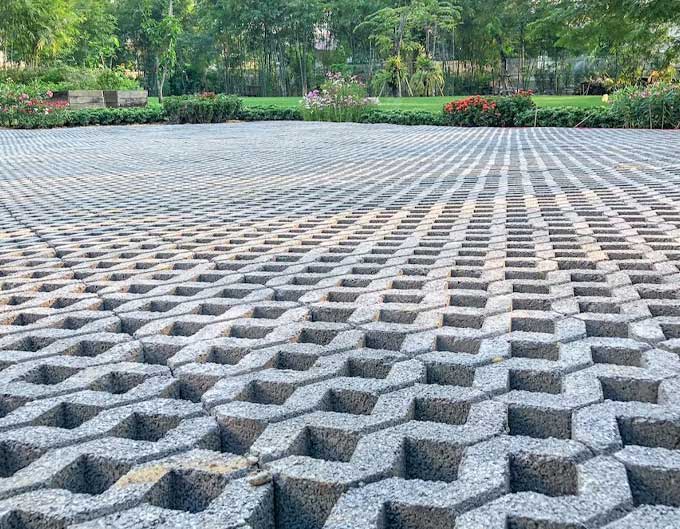Welcome to the world of decorative blocks for gardens! As a passionate gardener and outdoor enthusiast, I’ve explored various ways to transform my garden space. Today, I’m excited to share my insights on how decorative blocks can elevate your garden’s aesthetic while providing functional benefits.
What Are Decorative Blocks for Gardens?
Decorative blocks, also known as bloques decorativos para jardin, are versatile materials used to create visually appealing structures in gardens. These blocks come in various materials, shapes, and sizes, enabling you to unleash your creativity. They can be used for:
- Edging flower beds
- Creating garden walls
- Building outdoor seating
- Forming raised garden beds
- Enhancing pathways
Different Types of Decorative Blocks
Understanding the types of decorative blocks available will help you choose the right ones for your garden. Here are some popular options:
1. Concrete Blocks
Concrete blocks are durable and versatile. They can be painted or left in their natural state to create a modern look.
2. Brick Blocks
Brick blocks provide a classic aesthetic. They are often used for pathways and borders.
3. Stone Blocks
Natural stone blocks offer a rustic charm. They are perfect for gardens that embrace a natural landscape.
4. Paver Blocks
Paver blocks come in a variety of colors and shapes, allowing for intricate designs in patios and pathways.

5. Decorative Cinder Blocks
Cinder blocks can be used creatively to build garden furniture, planters, and even vertical gardens.
Benefits of Using Decorative Blocks in Your Garden
Incorporating decorative blocks offers several benefits that can enhance your outdoor space:
1. Aesthetic Appeal
Decorative blocks can significantly improve the visual aspect of your garden. Whether you prefer a contemporary or traditional look, there are options to suit your style.

2. Durability
Most decorative blocks, especially concrete and stone, are incredibly durable and can withstand weathering.
3. Low Maintenance
Once installed, decorative blocks require minimal maintenance, allowing you to enjoy your garden without constant upkeep.

4. Versatile Uses
From pathways to walls, the possibilities with decorative blocks are nearly endless. You can mix and match to create unique features.
How to Incorporate Decorative Blocks into Your Garden Design
Now that you know what decorative blocks are and their benefits, let’s explore how to use them effectively:
1. Edging and Borders
Use decorative blocks to outline flower beds or pathways. This helps keep your garden tidy while adding depth to the design.

2. Garden Walls
Building a retaining wall with decorative blocks can provide structure while preventing soil erosion.
3. Raised Beds
Consider using blocks to create raised garden beds, which can enhance plant growth by improving drainage.

4. Unique Planters
Decorative blocks can serve as creative planters for succulents or herbs, adding a touch of green to your space.
5. Pathways and Patios
Install paver blocks to create beautiful pathways or patios that lead you through your garden.

Comparison of Decorative Block Types
| Type of Block | Aesthetic Appeal | Durability | Cost | Maintenance |
|---|---|---|---|---|
| Concrete | Modern | High | $$ | Low |
| Brick | Classic | High | $$$ | Low |
| Stone | Rustic | Very High | $$$$ | Very Low |
| Paver | Varied | High | $$$ | Low |
| Cinder | Industrial | Moderate | $ | Low |
As seen in the table above, each type of block has its unique characteristics, allowing you to choose based on your garden theme and budget.
Pros and Cons of Decorative Blocks
Pros
- Available in various styles and materials
- Durable and long-lasting
- Low maintenance
- Enhances garden aesthetics
- Great for DIY projects
Cons
- Can be expensive depending on the material
- Installation may require physical labor
- Some materials might not be eco-friendly
Personal Experience: My Journey with Decorative Blocks
When I first decided to enhance my garden, I stumbled upon decorative blocks and was initially overwhelmed by the options. After much research and experimentation, I decided to create a small seating area using concrete blocks. The process was quite engaging, and I loved how I could customize the seating arrangement. The end result was not only functional but also aesthetically pleasing!
Over time, I incorporated stone blocks for a rustic path leading to my favorite flower bed. This blend of materials allowed me to create a garden that is uniquely mine, reflecting my personal style.
Frequently Asked Questions (FAQs)
1. What are the best decorative blocks for a budget-friendly garden?
Cinder blocks are often the most cost-effective option. They are versatile and can be painted or decorated to suit your garden’s theme.
2. Can I use decorative blocks for a DIY project?
Absolutely! Decorative blocks are perfect for DIY projects like benches, planters, or even fire pits.
3. How do I maintain decorative blocks in my garden?
Most decorative blocks require minimal maintenance. Regular cleaning and occasional inspections for damage are usually sufficient.
4. Are decorative blocks eco-friendly?
It depends on the material. Natural stone is generally more eco-friendly compared to some manufactured concrete blocks.
5. Can I mix different types of blocks in one garden?
Yes! Mixing different materials can create a visually interesting and unique garden design.